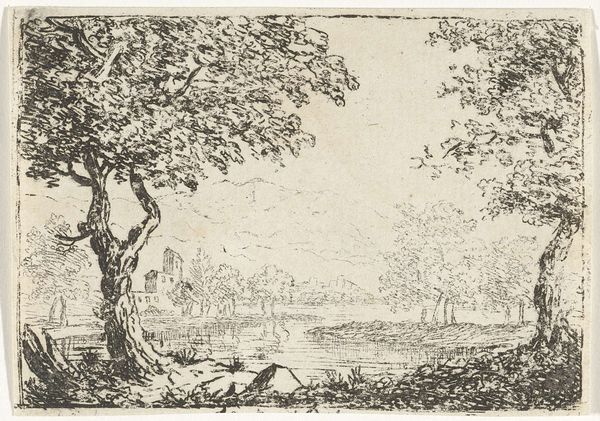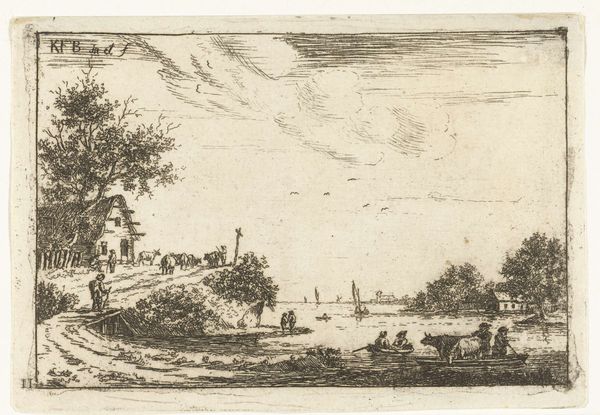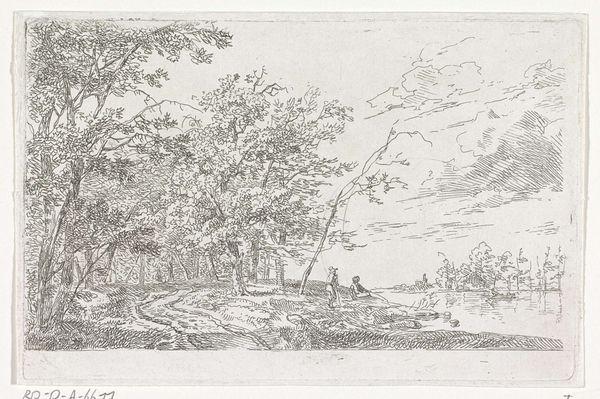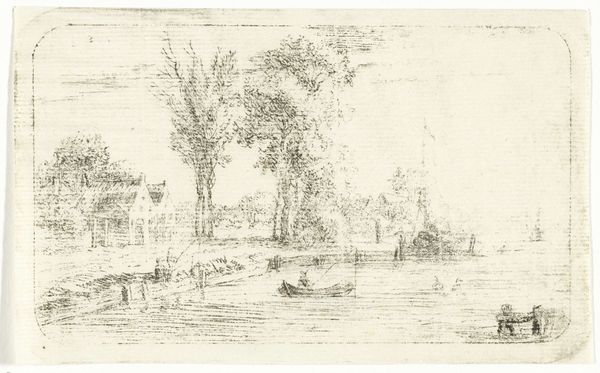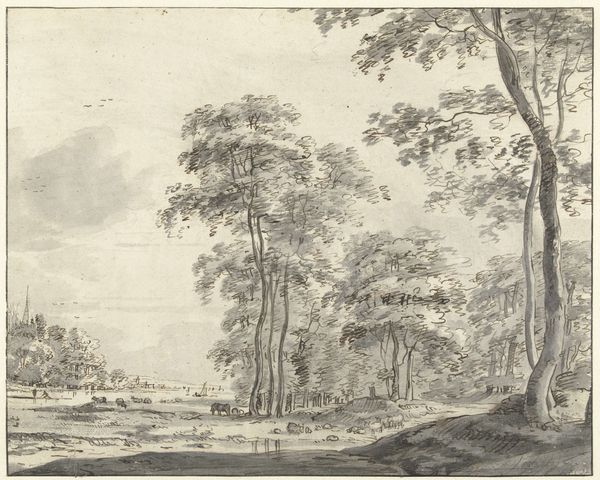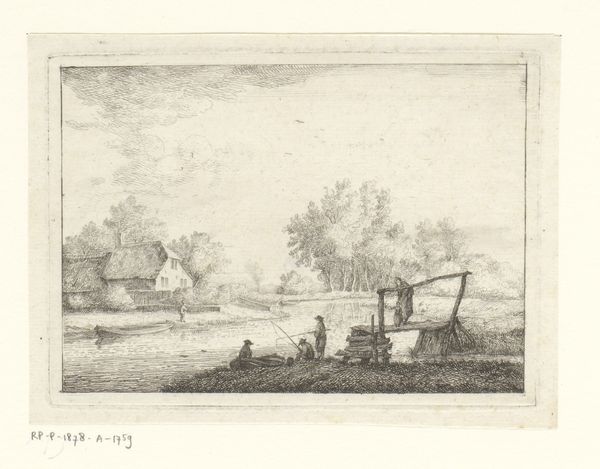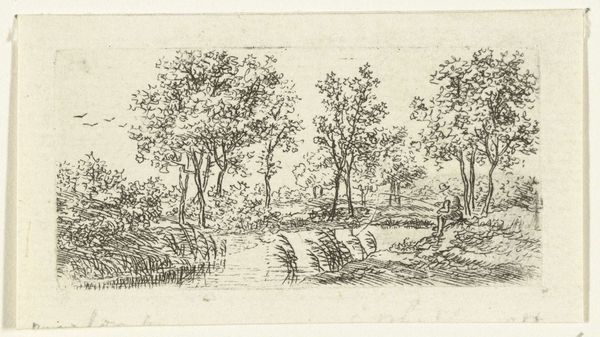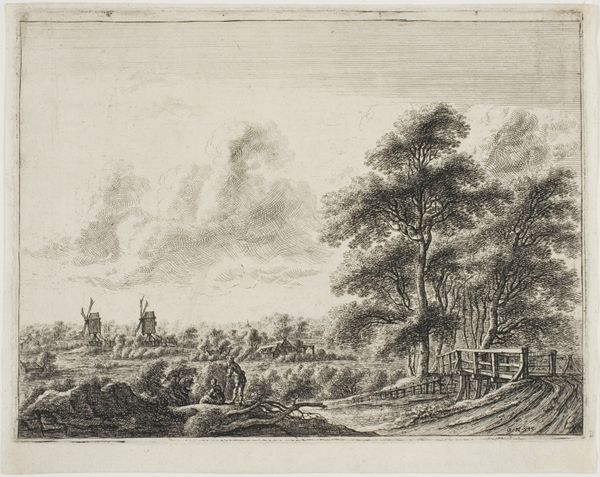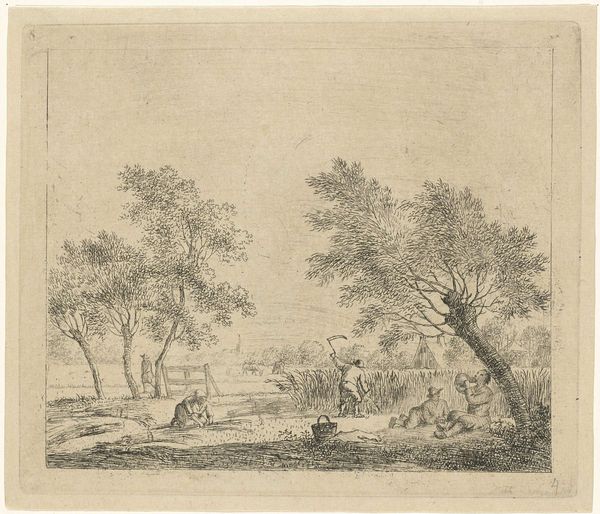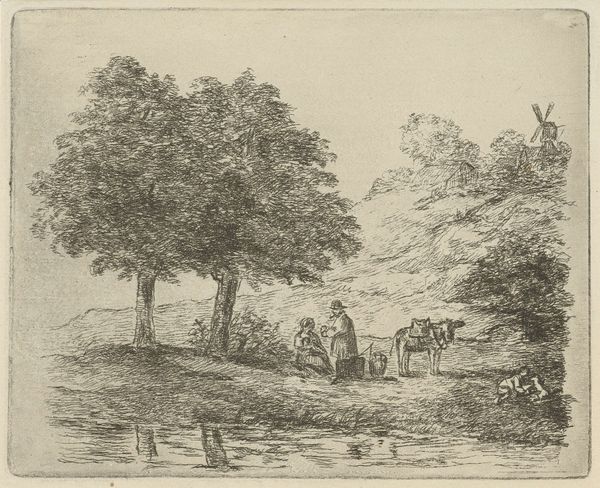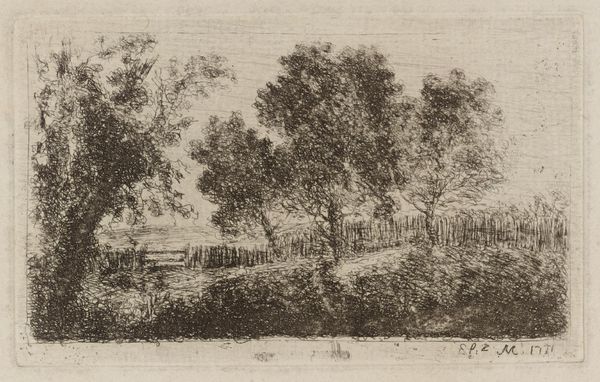
print, etching
#
baroque
# print
#
etching
#
landscape
#
etching
#
genre-painting
Dimensions: height 117 mm, width 168 mm
Copyright: Rijks Museum: Open Domain
Editor: So, here we have Peeter Snijers’s "Rivierlandschap met figuren, boten en een molen," an etching, likely made sometime between 1694 and 1752. I find the scene quite calming, a gentle reminder of simpler times. What strikes you about this work? Curator: The overall atmosphere, achieved through the delicate etching technique, hints at a specific yearning within Dutch landscape art. There's a persistent longing for Arcadia, for a return to pastoral ideals. Notice how the windmill isn't just a functional object but almost a symbolic monument, referencing a lost, perhaps idealized, past. Do you see that connection to similar visual structures in other Dutch Golden Age works? Editor: I can see that! There’s a definite emphasis on the tranquility of rural life. The people seem at peace with nature and the simple task of working. Curator: Precisely. The scene is more than just a depiction of daily life. It's imbued with a sense of collective memory, invoking a desire to return to, or perhaps, invent a vision of harmonious existence. And what do you make of the figures being at a distance? What do they tell you? Editor: Good point. By positioning the figures far off, there's maybe an aim to amplify the landscape’s timelessness, like this has been and will always be. Curator: A key takeaway. The symbols woven into it are enduring elements of the Dutch cultural identity: water, windmills, and the promise of serenity. Editor: It makes me appreciate how deeply symbolic these pastoral landscapes are. I initially saw only surface beauty, but I'm now finding profound cultural references. Curator: It’s about deciphering how seemingly simple scenes echo deeper emotional and historical realities, even anxieties. A conversation that extends into our contemporary relationship to "nature".
Comments
No comments
Be the first to comment and join the conversation on the ultimate creative platform.
